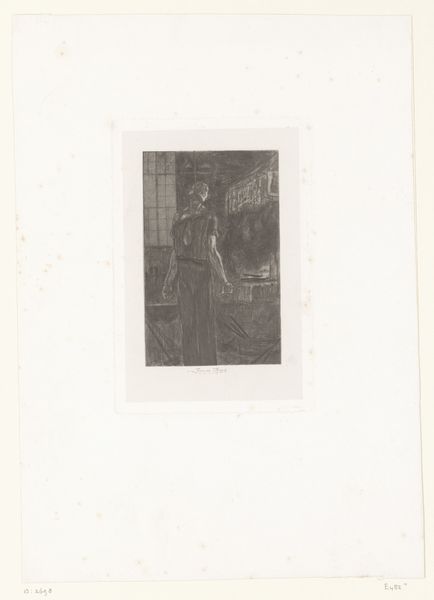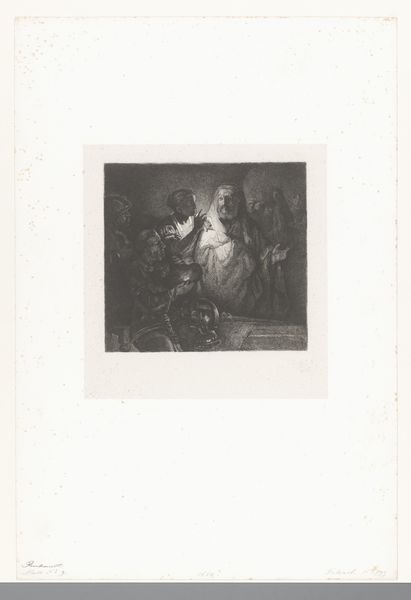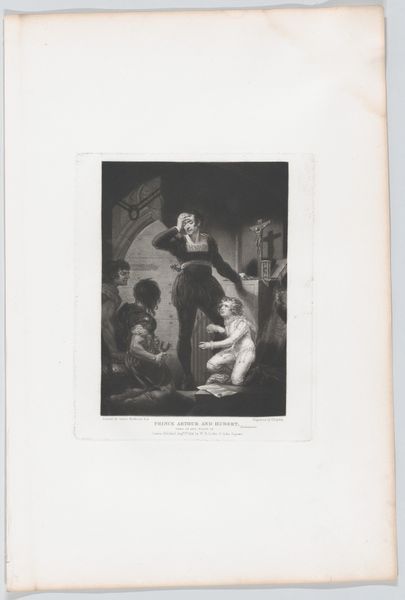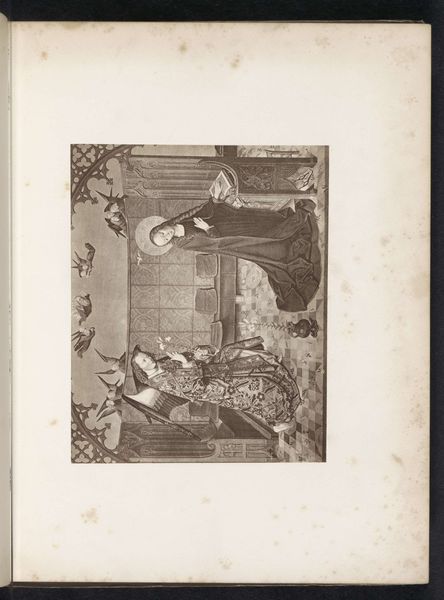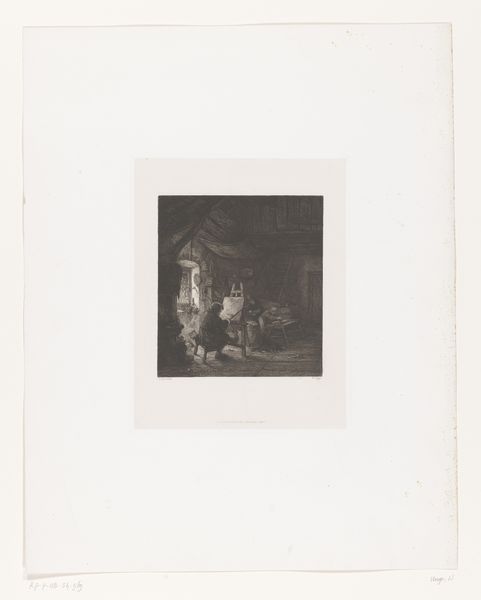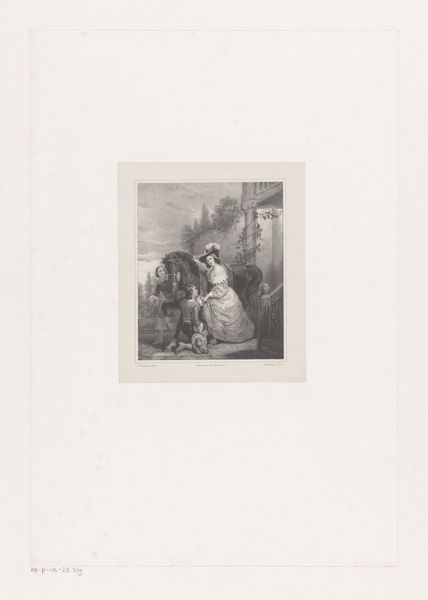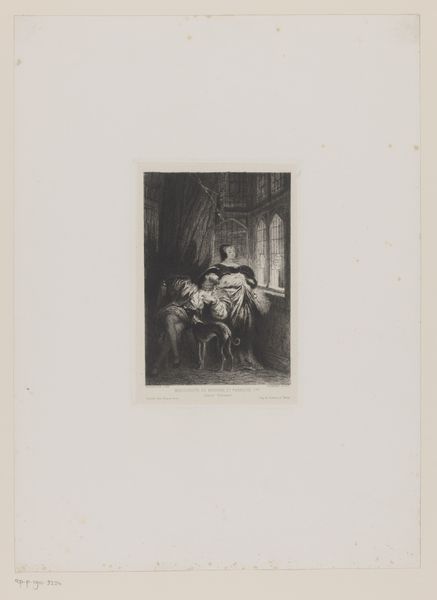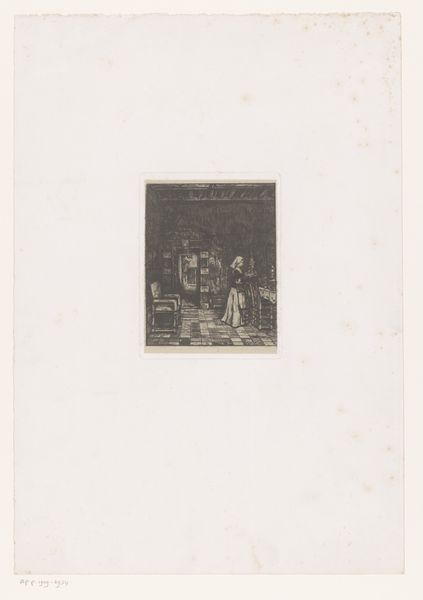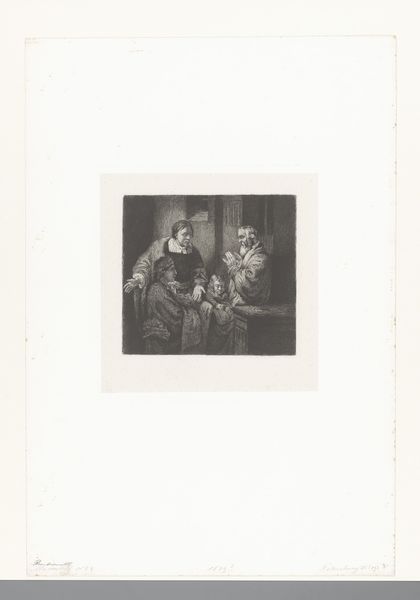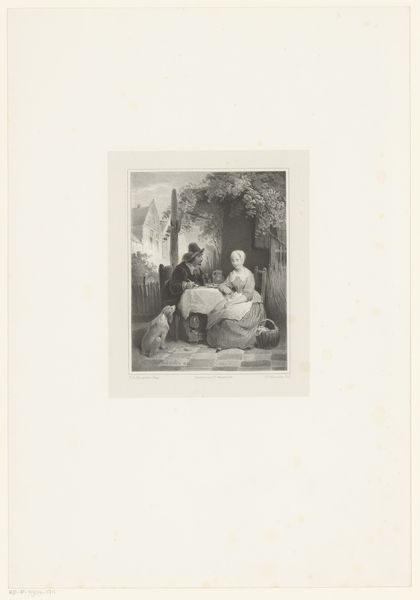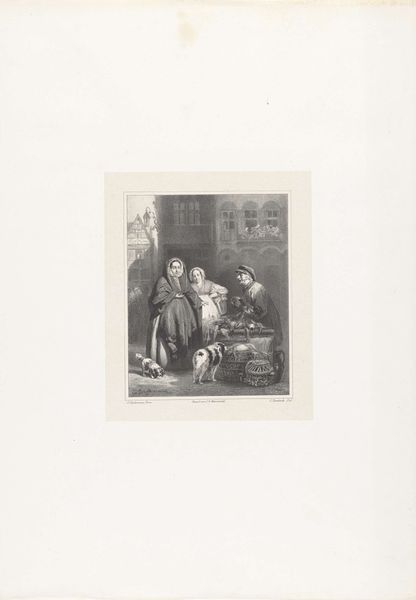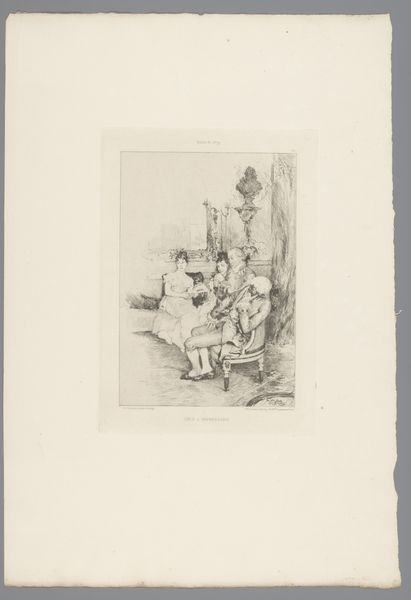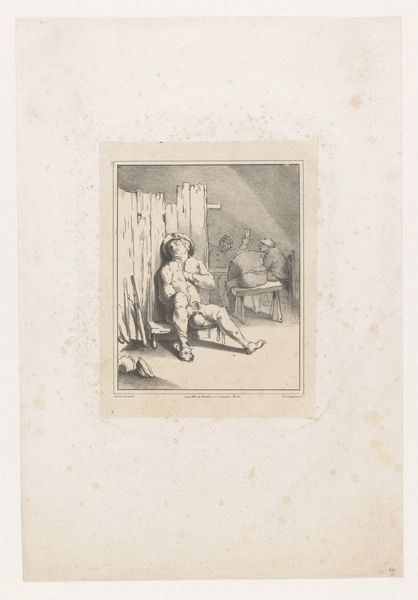
Dimensions: height 333 mm, width 250 mm
Copyright: Rijks Museum: Open Domain
Curator: Johann Wilhelm Kaiser's 1856 print, “A Woman with Child at a Prison," evokes an immediate sense of melancholy, wouldn't you agree? Editor: Absolutely. The contrast between the soft form of the child and the rigid bars of the prison immediately sets a somber tone. And seeing it realized as an engraving raises questions about the means of production and the print’s original audience. Curator: Precisely. Consider how Kaiser, with sharp, clean lines, creates depth. The mother and child are the clear focal point, composed centrally with precise rendering. Editor: But look at the process: ink on paper, mass produced. How does the reproduction of this emotional scene affect its message? This wasn’t some singular, precious painting displayed in a salon. This would have been relatively affordable. Who was buying these, and what did they do with them? Curator: Excellent questions! While pinpointing the exact consumer base is tricky, engravings like this would likely have been accessible to a middle-class audience, distributed for personal reflection on social justice themes—note how successfully Romanticism enabled a taste for narrative. The composition leads the eye; the engraver knew the rules and played the game perfectly. Editor: Rules established through workshops, apprenticeships… This speaks to the highly specialized labor involved. The choice of printmaking implies a wider dissemination, a challenge to the elite's monopoly on art. We can investigate this work to gain insights into the circulation of imagery, the labor behind its creation, and its interaction with social issues. The artist harnessed engraving—traditionally valued less than painting—as a tool. Curator: I do see the inherent critique regarding materiality. Kaiser elevates the role of the print through its emotionally-resonant subject and deft technical handling. A confluence of aesthetic choice, emotional depth, and dissemination to move people through narrative power. Editor: The production details are crucial. The cost of reproducing these images shaped its audience. These works can teach us about shifting tastes, class awareness, the ways social causes intersected with consumer habits, and how artists strategically navigated material constraints and embraced new techniques. Curator: This print highlights the capacity for engravings, not only as documentary or reproductive mediums, but also as carriers of profound emotional and narrative content, which gives cause for reflection on art itself and the values that underpin its judgement. Editor: Seeing Kaiser’s work has highlighted, for me, the tension between artistic expression and mass production—the means influencing both the message and its audience.
Comments
No comments
Be the first to comment and join the conversation on the ultimate creative platform.
